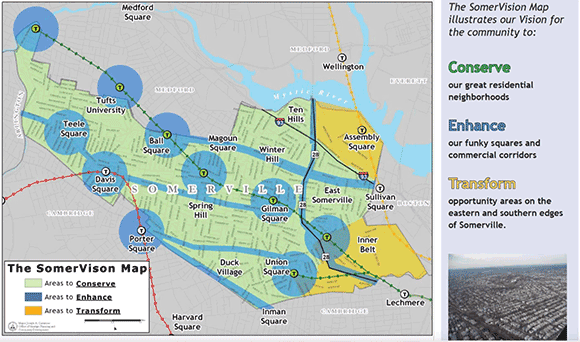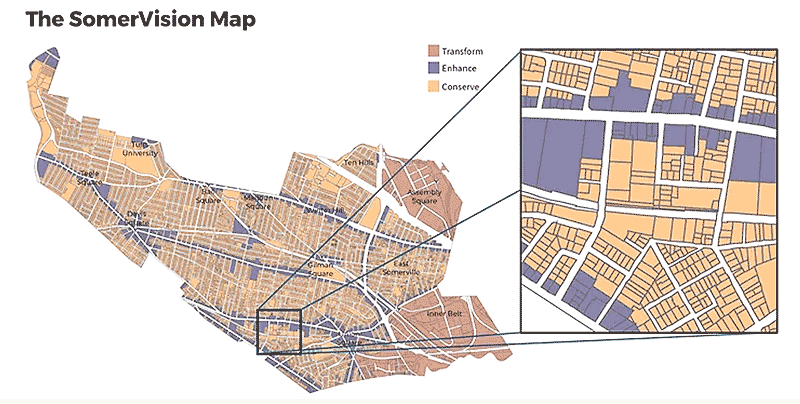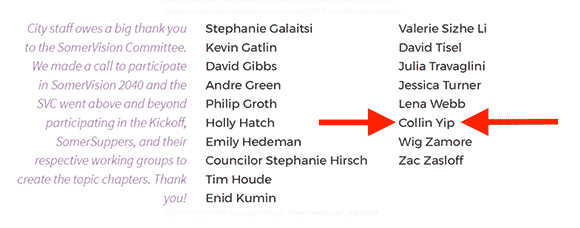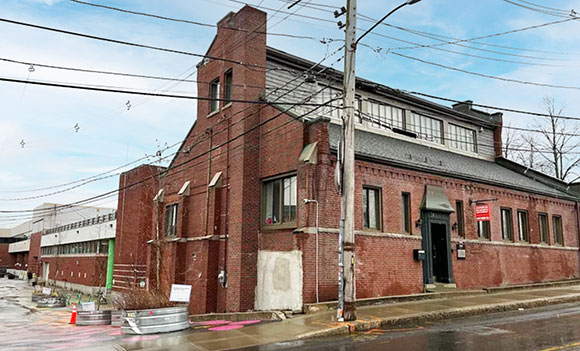(The opinions and views expressed in the commentaries and letters to the Editor of The Somerville Times belong solely to the authors and do not reflect the views or opinions of The Somerville Times, its staff or publishers)

By Chris Dwan
The zoning proposal currently on the table from Rafi Properties is a non-starter. They should withdraw it and propose incremental adjustments to the current zoning instead. If they choose not to withdraw, the City Council should swiftly and unanimously vote it down – after the legally required public hearing, of course.
There are better and worse reasons to reject this proposal. Among the best is that, as written, it’s not serious. This version was never intended to pass. It has no chance without significant modification and everybody knows it. This version is a negotiating move by Rafi, intended to set expectations and get us thinking down from some imagined version of Somerville rather than up from the reality on the ground.
The Rafi team keeps asking “if not this, then what?” as if the city is somehow obligated to help them find a huge project to do. We are under no obligation to take everything a wealthy developer says seriously. Using this proposal as a baseline instead of working from our existing zoning and the city’s master plan would make a mockery of 15 years of thoughtful planning and community engagement.
SomerVision
Somerville has a master plan, quaintly named “SomerVision.” It was created in a three-year effort that began in 2009, with a substantial update in 2019. The first process (SomerVision2030) was, by most reports, robust and inclusive. The ten-year update (SomerVision2040) had a whiff of manufactured consent about it, but was also generally good and collaborative. These plans are the result of hundreds of hours of citywide conversations – years of effort to create a shared vision for the city.
As plans go, SomerVision is frustratingly squishy. Whatever you’re trying to argue – from bike lanes to translation services – there’s probably a screenshot-ready graphic and a call-out quote in there just for you. People invoke SomerVision when proposing, honestly, just about anything. Rafi’s proposal does this awkwardly, quoting a couple of out-of-context sentences from the section on climate change.
The “SomerVision Map” is an exception to the say-anything, people-pleasing bulk of the plan. It divides the city into three types of districts: Conserve, Enhance, and Transform. The transformation districts are on the East side of the city – adjacent to highways and transit lines and mostly shielded from residential neighborhoods.

The map on page 17 of SomerVision2030 puts heavy development to the Southern and Eastern sides of the city.
This map, and the process that created it, were part of how former Mayor Curtatone built the political will to bulldoze and redevelop more than 360 acres – nearly 15% of Somerville’s 4.5 square mile surface area. This map made the high-rises at Assembly Row, Inner Belt, Brickbottom, and Union Square possible. It allowed us to compete for corporate headquarters like Puma and Mass General Brigham, which brought jobs and tax revenue to the city. It also helped to justify increased by-right housing density close to MBTA stations and along main roads, more than a decade before the state mandate to do the same.

The updated SomerVision map from 2019 goes to the parcel level.
There is no possible way to use SomerVision to justify Rafi’s proposal. Not because it’s necessarily a bad plan – it’s just in the wrong place. The map from SomerVision2030 marks the entirety of Duck Village as “conserve.” SomerVision2040 confirms that judgement on Rafi’s properties, parcel by parcel. The Rafi team certainly knows this because Collin Yip, the sole owner and general manager, served on the 2019 SomerVision committee.

Colin Yip’s name appears as a committee member in the SomerVision2040 report.
Why Though
Rafi has spent the last couple of years asking local groups what they want. Faced with a free-form question, people said that they wanted trees, open spaces, pollinator corridors, north-south shuttles, the sewers to be fixed, space for artists, the sun, the moon, and all the stars besides. Rafi uses that aspirational set of desires to justify the massive scale of their proposal. They claim to have added up the cost of providing everything anybody had ever mentioned, and said “goodness! We’ll have to rewrite the zoning entirely to give you all of that in just our 7.5 acres!”
There is a much more straightforward reason for an owner to go after a zoning change at this scale and it’s the same reason that the owners of adjacent properties are supporting it: They want to sell, not build.
Fabrication (FAB) zoning was created to shield a small amount of property, not more than 30 acres citywide, from the upward pressure created by uncontrolled market forces. That’s the reasoning behind excluding housing and limiting height and floor plate size. The intent behind FAB was to make it possible – though by no means certain – that some small amount of relatively cheap space might remain in Somerville for cool, funky, not terribly profitable things to happen.
I think that Rafi are trying to re-attach the space, which they purchased for $88M in cash back in 2018, to the upward pressure of the real-estate market. Nothing in the proposal prevents them from turning around and selling at a massive markup before the ink is dry on the zoning variance. I suspect that’s what is going on. It would certainly explain why Rafi are putting more effort into green- and teen- washing than into crafting a proposal that might pass on its own merits on the first try.
Yes, But Not Here
I am not pushing back on development in general and I am certainly not suggesting that we should to cling to this particular collection of crumbling 150-year-old brick buildings. The old Ames Factory campus needs work, and I wish that the owners, past and present, had kept up with the maintenance. As I said at the beginning, I support expansion at this location, but thoughtfully. Rafi should start with a single building to minimize displacement, build trust, and build experience on the team. They should propose a bit more height while maintaining the core concepts of FAB, rather than jettisoning them.
Somerville has hundreds of acres available for “innovation campuses” – space enough for the sun, the moon, and all the stars – and it’s less than a mile from Rafi’s site. This project would be a slam dunk if it was a bit closer to the highways and transit stations, among our rapidly growing collection of towers and corporate headquarters. That would align with 15 years of thoughtful planning and, no coincidence, address most of the concerns, both short and long term, that have been raised by the community.
Heck, they wouldn’t even need the awkwardly bolted on shuttle bus service anymore.

Rafi wants to take the portion of the SomerNova campus on the East side of Dane Street up to sixteen stories, and unlimited height.
As a closing note: This is my fourth article about this proposal and my opinion has evolved. I didn’t fully understand the point of FAB before writing SomerNova and Fabrication districts. I wrote the SomerNova proposal, and keep no on the table, in as even-handed a way as I could, hoping to raise awareness and bring more people into the conversation.
I’ve had dozens of conversations with neighbors, elected and un-elected officials, and even the development team over the last few months. Today, I think we should just vote this thing down, and swiftly too. The city’s attention is incredibly limited and we have more important things to work on, as a community.















Reader Comments